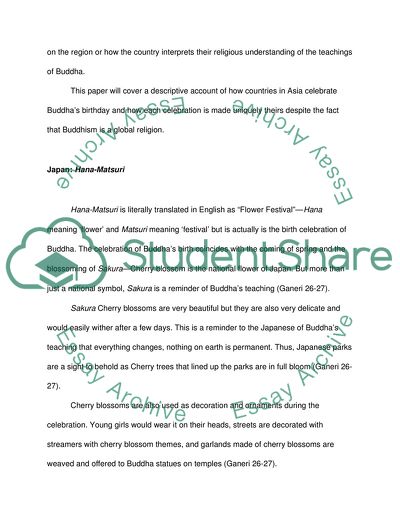Cite this document
(Buddhas Birthday Essay Example | Topics and Well Written Essays - 1250 words, n.d.)
Buddhas Birthday Essay Example | Topics and Well Written Essays - 1250 words. https://studentshare.org/religion-and-theology/1750948-how-is-the-buddahs-birthday-celebrated
Buddhas Birthday Essay Example | Topics and Well Written Essays - 1250 words. https://studentshare.org/religion-and-theology/1750948-how-is-the-buddahs-birthday-celebrated
(Buddhas Birthday Essay Example | Topics and Well Written Essays - 1250 Words)
Buddhas Birthday Essay Example | Topics and Well Written Essays - 1250 Words. https://studentshare.org/religion-and-theology/1750948-how-is-the-buddahs-birthday-celebrated.
Buddhas Birthday Essay Example | Topics and Well Written Essays - 1250 Words. https://studentshare.org/religion-and-theology/1750948-how-is-the-buddahs-birthday-celebrated.
“Buddhas Birthday Essay Example | Topics and Well Written Essays - 1250 Words”. https://studentshare.org/religion-and-theology/1750948-how-is-the-buddahs-birthday-celebrated.


